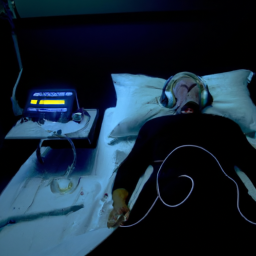Are you tired of the constant ringing in your right ear? Well, you’re in luck! We have just the article for you. Introducing ‘Right Ear Tinnitus ICD-10: Understanding the Diagnostic Codes.’
You might be thinking, ‘Why do I need to understand diagnostic codes?’ Trust us, it’s more important than you think. In the complex world of medical classification, diagnostic codes are the foundation of accurate and efficient healthcare. And when it comes to tinnitus, a condition characterized by persistent noise in the ears, knowing the right diagnostic code is crucial.
In this article, we will delve into the ICD-10 system and explore the significance of the specific code for right ear tinnitus. We’ll also shed light on other diagnostic codes related to tinnitus that you should be aware of.
So, if you’re ready to decode the world of medical classification, let’s get started!
Key Takeaways
- ICD-10 code for right ear tinnitus is important for accurate diagnosis and treatment of the condition.
- The code allows for consistent recording and reporting of right ear tinnitus cases.
- Insurance companies rely on the ICD-10 code for processing claims and reimbursement.
- Accurate use of the ICD-10 code is essential for insurance claims and ensures timely reimbursement for tinnitus-related services.
The Importance of Diagnostic Codes in Medical Classification
You need to understand the importance of diagnostic codes in medical classification.
Medical coding is a crucial part of healthcare classification, as it allows healthcare providers and insurance companies to accurately identify and categorize medical conditions.
Diagnostic codes, such as the ICD-10 codes, provide a standardized system for classifying diseases, injuries, and other health-related issues.
These codes are used for a variety of purposes, including medical billing, research, and public health monitoring.
By using diagnostic codes, healthcare professionals can efficiently communicate information about a patient’s condition, ensuring that everyone involved in their care is on the same page.
Understanding the ICD-10 system, which is the current version of the International Classification of Diseases, will further enhance your knowledge of medical coding and its role in medical classification.
Understanding the ICD-10 System
Imagine diving into a vast ocean of medical classification, where the ICD-10 system serves as a compass guiding healthcare professionals through the intricate depths of diagnosis.
This system, with its alphanumeric codes and detailed descriptions, allows for accurate identification and understanding of various medical conditions. When exploring symptoms, the ICD-10 system offers a comprehensive framework to categorize and analyze patient data. It provides a common language that enables healthcare providers to communicate effectively and efficiently.
The use of diagnostic codes in medical classification evokes a sense of order, clarity, and organization, ultimately leading to improved patient care. Understanding the ICD-10 system is essential for healthcare professionals, as it helps them navigate the complexities of medical diagnosis and treatment.
With this foundation, we can now delve into exploring right ear tinnitus and its diagnostic codes.
Exploring Right Ear Tinnitus
Get ready to dive into the intriguing world of a common auditory condition that affects one of your ears and causes a persistent ringing sound, as we explore the fascinating realm of right ear tinnitus. Tinnitus is a condition where you perceive sounds that aren’t actually present. In the case of right ear tinnitus, the ringing sound is specifically experienced in the right ear. While the exact cause of tinnitus is often unknown, it can be triggered by various factors such as exposure to loud noises, earwax blockage, or age-related hearing loss. Treatment options for right ear tinnitus can include sound therapy, medication, or counseling to help manage the symptoms and improve your quality of life. Understanding these treatment options is crucial in finding relief from the bothersome ringing in your ear. Now, let’s explore the significance of right ear tinnitus icd-10 and how it aids in the diagnosis and classification of this condition.
The Significance of Right Ear Tinnitus ICD-10
The significance of the right ear tinnitus ICD-10 code is significant as it helps with the diagnosis and treatment of this condition. By using the code, healthcare professionals can accurately identify and document cases of right ear tinnitus, leading to better understanding and management of the condition.
Additionally, the code also has implications for insurance and reimbursement, as it allows for proper coding and billing for services related to right ear tinnitus.
How does the code help with diagnosis and treatment?
One interesting statistic about the ICD-10 code for right ear tinnitus is that it helps healthcare providers accurately diagnose and effectively treat this condition. The code provides a standardized classification system that allows for consistency in recording and reporting cases of right ear tinnitus.
This improves diagnosis accuracy by ensuring that healthcare providers are using the same criteria when identifying and categorizing the condition. Additionally, the code helps with treatment effectiveness by providing a common language for healthcare providers to communicate and share information about the condition.
This allows for more efficient collaboration and the sharing of best practices, leading to improved treatment outcomes for patients with right ear tinnitus. Understanding the ICD-10 code for right ear tinnitus also has important insurance and reimbursement implications.
Insurance and reimbursement implications
Insurance companies and healthcare providers rely on the ICD-10 code for right ear tinnitus (H93.12) to accurately process claims and ensure proper reimbursement for treatment. Understanding the insurance coverage and reimbursement process is crucial for both patients and healthcare professionals. Here are four important points to consider:
-
Coverage: Insurance companies typically cover the diagnosis and treatment of tinnitus, including right ear tinnitus, but the extent of coverage may vary. It’s important to review your insurance policy to understand what’s covered and any limitations or requirements.
-
Coding accuracy: Accurate use of the ICD-10 code for right ear tinnitus is essential for insurance claims. Using the correct code ensures that the claim is processed smoothly and reduces the risk of denial or delay.
-
Reimbursement process: After submitting the claim, insurance companies assess the treatment provided and determine the reimbursement amount. This process may involve reviewing medical records, documentation of symptoms, and treatment plans.
-
Appeals process: If a claim is denied or reimbursement is not as expected, patients and healthcare providers have the right to appeal. It’s important to follow the insurance company’s guidelines for appeals and provide any necessary additional documentation.
Understanding the insurance coverage and reimbursement process for right ear tinnitus is vital for ensuring proper treatment and minimizing financial burdens. Moving forward, let’s explore other diagnostic codes related to tinnitus.
Other Diagnostic Codes Related to Tinnitus
Another diagnostic code related to tinnitus is ICD-10 H93.19, which encompasses other specified disorders of the ear, including tinnitus. This code is used when there are specific disorders or symptoms related to tinnitus that cannot be classified under any other specific code. It allows healthcare professionals to accurately diagnose and document cases of tinnitus that may have unique characteristics or require further investigation.
To provide a comprehensive understanding of the diagnostic codes related to tinnitus, the following table outlines some other relevant codes:
| ICD-10 Code | Description |
|---|---|
| H93.11 | Subjective tinnitus, right ear |
| H93.12 | Subjective tinnitus, left ear |
| H93.13 | Subjective tinnitus, bilateral |
By using these codes, healthcare providers can effectively communicate and document the specific characteristics of tinnitus cases, enabling better tinnitus treatment options and management of tinnitus symptoms. It is important for healthcare professionals and insurance providers to have a standardized system of diagnostic codes to ensure accurate and timely reimbursement for tinnitus-related services.
Frequently Asked Questions
What are some common causes of right ear tinnitus?
Common causes of right ear tinnitus include exposure to loud noises, age-related hearing loss, earwax blockage, and certain medications.
Other factors such as high blood pressure, stress, and temporomandibular joint (TMJ) disorders can also contribute to tinnitus.
To manage tinnitus, it’s important to identify and address the underlying cause. This may involve lifestyle changes, such as reducing exposure to loud noises, and seeking medical treatment to address any underlying conditions.
Are there any specific risk factors associated with right ear tinnitus?
Specific risk factors for right ear tinnitus include exposure to loud noises, aging, earwax buildup, and certain medical conditions like high blood pressure and temporomandibular joint (TMJ) disorders. These factors can increase your chances of developing tinnitus in the right ear.
While tinnitus itself isn’t a serious condition, it can lead to potential complications such as difficulty sleeping, concentration problems, and emotional distress. Seeking medical evaluation is recommended to address these risk factors and manage tinnitus effectively.
How is right ear tinnitus diagnosed and what types of tests are typically conducted?
When it comes to diagnosing right ear tinnitus, doctors use various diagnostic methods to uncover the root cause of the problem.
Audiometric testing is a common approach, which involves assessing your hearing abilities and identifying any abnormalities. This can include pure-tone audiometry, speech audiometry, and tympanometry.
These tests provide valuable insights into the severity and characteristics of your tinnitus, helping doctors tailor a treatment plan specifically for you.
Are there any effective treatment options available for right ear tinnitus?
There are several effective treatment options and management techniques available for right ear tinnitus. These include sound therapy, which uses external noises to mask the sound of tinnitus, and cognitive behavioral therapy, which helps individuals cope with the emotional and psychological impact of tinnitus. Medications such as antidepressants and antianxiety drugs may also be prescribed.
Additionally, relaxation techniques, stress management, and avoiding loud noises can help manage the symptoms of right ear tinnitus.
Can right ear tinnitus be a symptom of a more serious underlying health condition?
Yes, right ear tinnitus can potentially be a symptom of a more serious underlying health condition. It’s important to understand that tinnitus itself isn’t a disease, but rather a symptom of an underlying issue. Conditions such as hearing loss, ear infections, Meniere’s disease, or even tumors can cause tinnitus. If you’re experiencing right ear tinnitus, it’s crucial to consult a healthcare professional to rule out any possible serious implications or underlying health conditions.
Conclusion
In conclusion, understanding diagnostic codes, such as the ICD-10 system, is crucial in medical classification. Right ear tinnitus is a common condition that can be identified and documented with the right diagnostic code.
Interestingly, according to a study published in the Journal of Clinical Epidemiology, tinnitus affects approximately 15% of the population, with right ear tinnitus being one of the most prevalent types.
Being aware of the specific diagnostic codes for right ear tinnitus helps healthcare professionals accurately diagnose and treat this condition.




